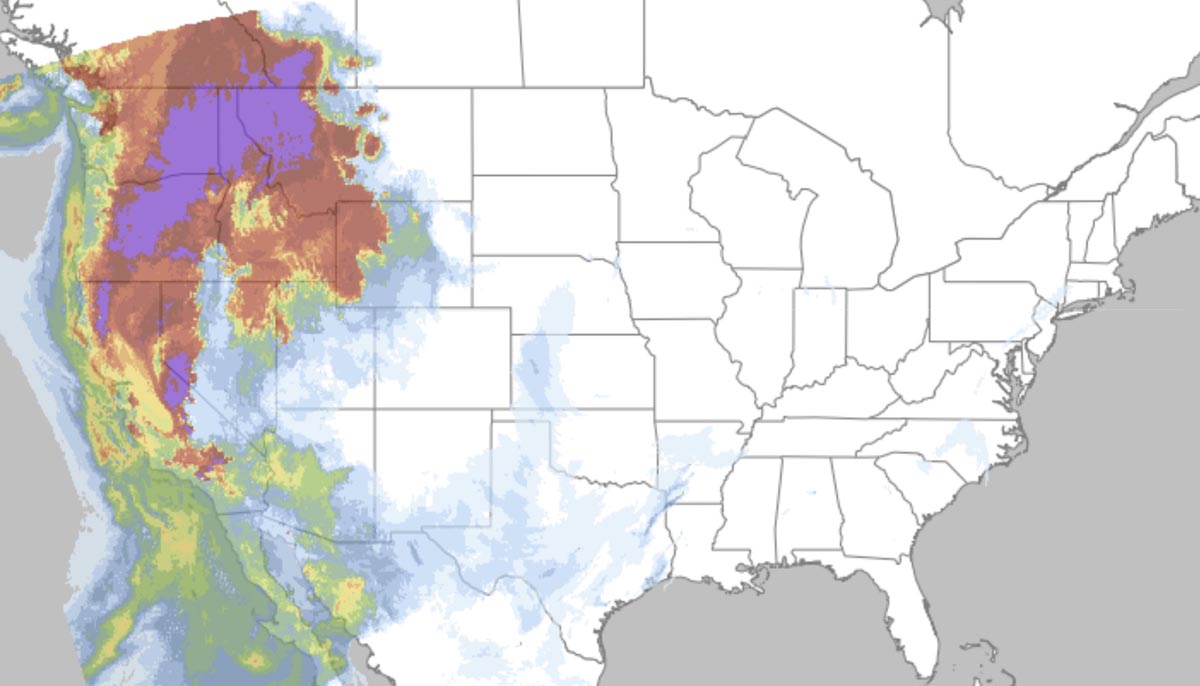September 17, 2020 | 7:24 a.m. PDT
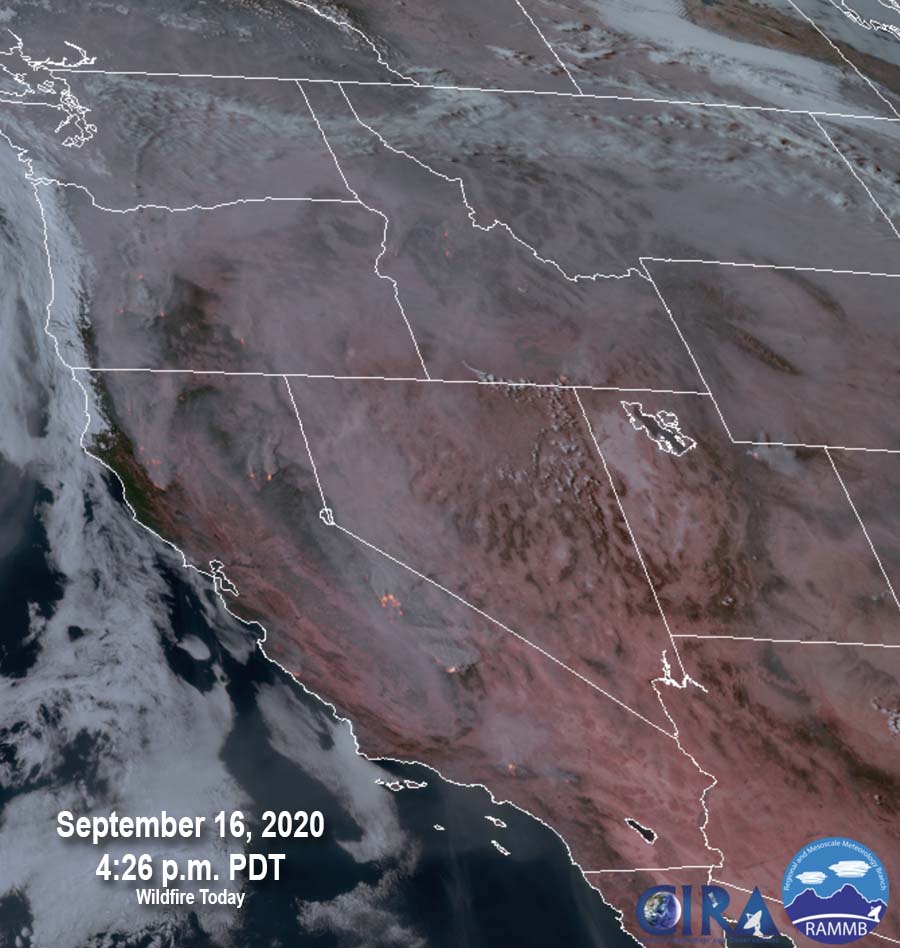
The satellite photo shows smoky skies in the Western states caused by wildfires in California and Oregon.
Current information about air quality and smoke can be found at https://wildfiretoday.com/tag/smoke/
News and opinion about wildland fire
September 17, 2020 | 7:24 a.m. PDT

The satellite photo shows smoky skies in the Western states caused by wildfires in California and Oregon.
Current information about air quality and smoke can be found at https://wildfiretoday.com/tag/smoke/
September 17, 2020 | 7 a.m. PDT
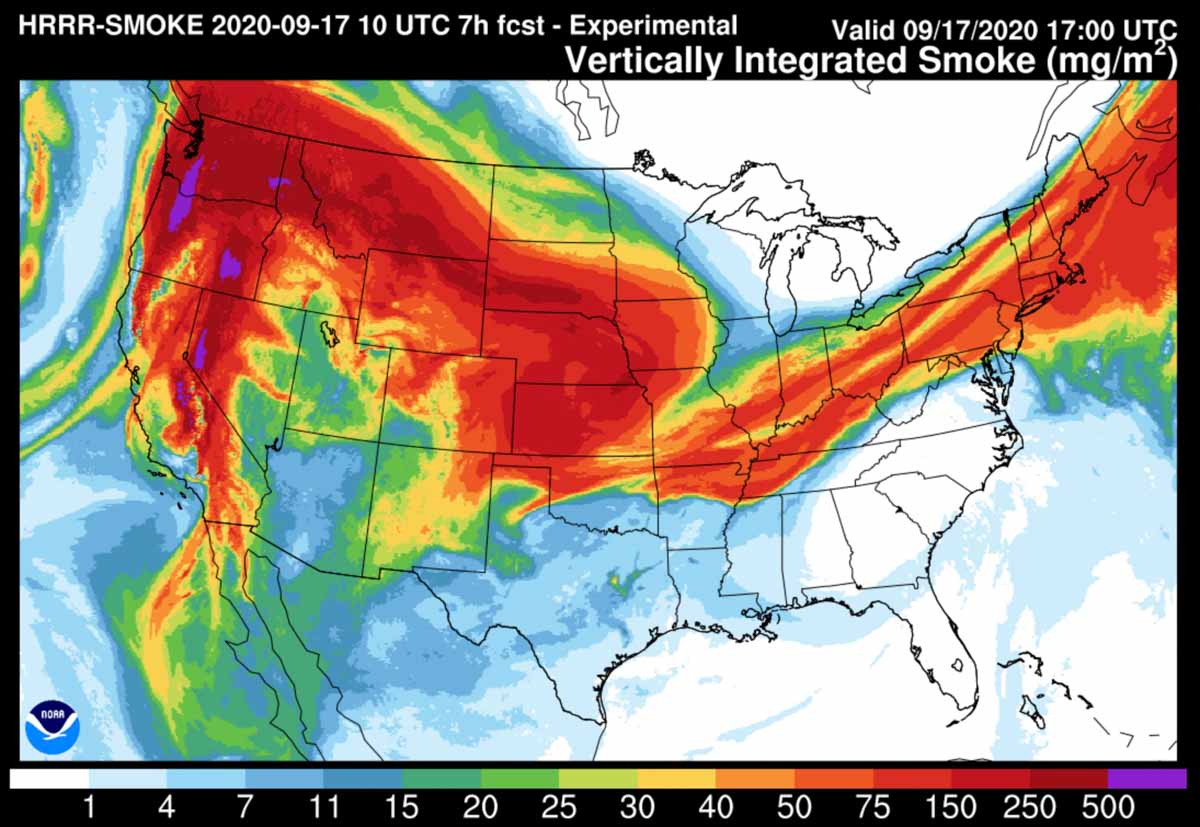
Near-surface smoke refers to the smoke that will hover within 8 meters (26 feet) of the ground—the kind responsible for burning eyes and aggravated asthma.
Vertically integrated smoke depicts all of the smoke in a vertical column, including smoke high in Earth’s atmosphere and can produce red sunrises and sunsets. In some cases where it is only at high altitudes it may not be very noticeable on the ground.
You can bookmark https://wildfiretoday.com/tag/smoke/ to always go to the latest article on Wildfire Today about smoke.

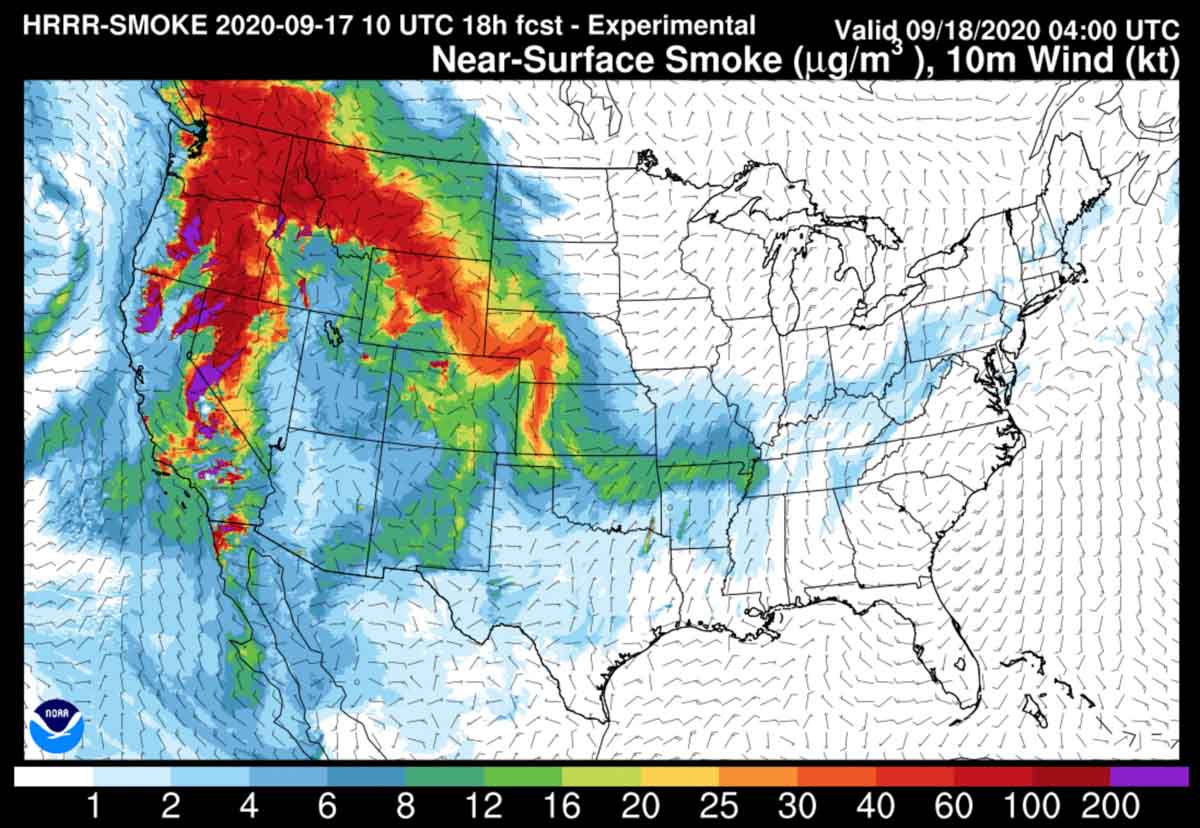
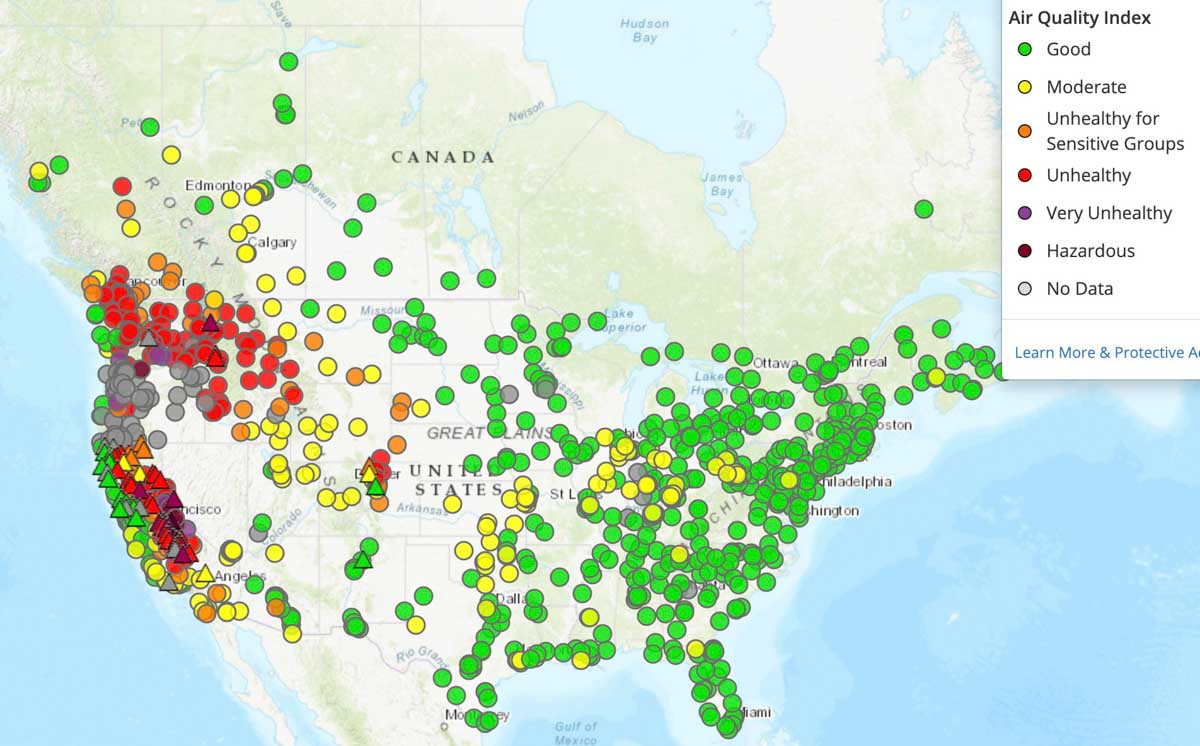
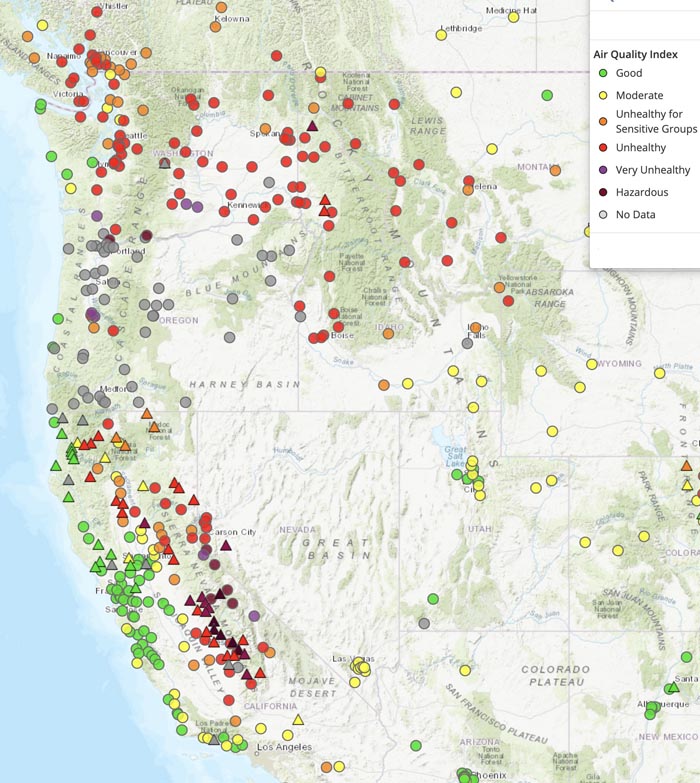
September 14, 2020 | 10:35 a.m. PDT
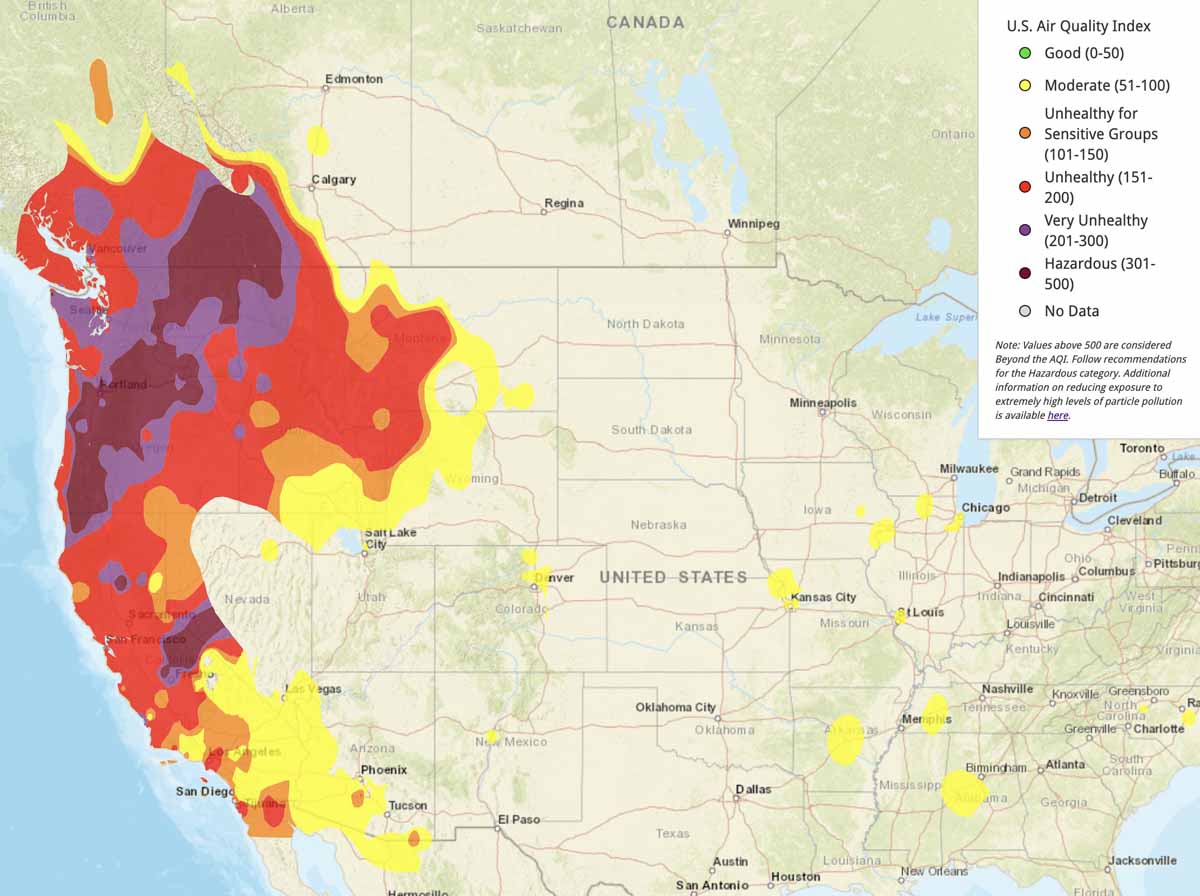
The fires in Oregon, Washington, and California continue to produce large quantities of smoke affecting air quality in those states and portions of Idaho, Montana, Wyoming, Nevada, and Arizona.
The forecast for Tuesday, below, shows improvement in the San Francisco and Los Angeles areas.
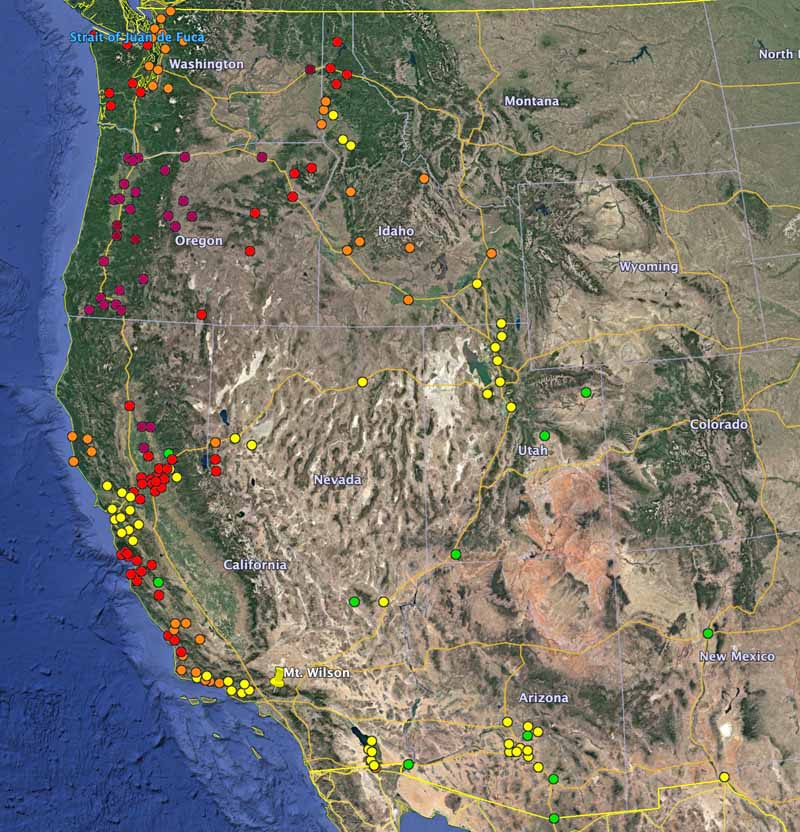
(Information on Wildfire Today about how to reduce your exposure to smoke.)
Below is current information about smoke dispersion across the U.S. and Canada. It is tough to find good, easy to read maps that show concentrations of wildfire smoke across the United States. The backgrounds in some cases obliterate the smoke information or the state boundaries.
If you find a good smoke map, let us know in the comments.
The NOAA webpage with the map below sometimes has smoke data, and sometimes it doesn’t. It also has this, seen today September 14, 2020: “Please note that this web page that you are currently on will be permanently retired on September 7, 2020.” There is a link to a different page, but I was unable to quickly find a substitute map.
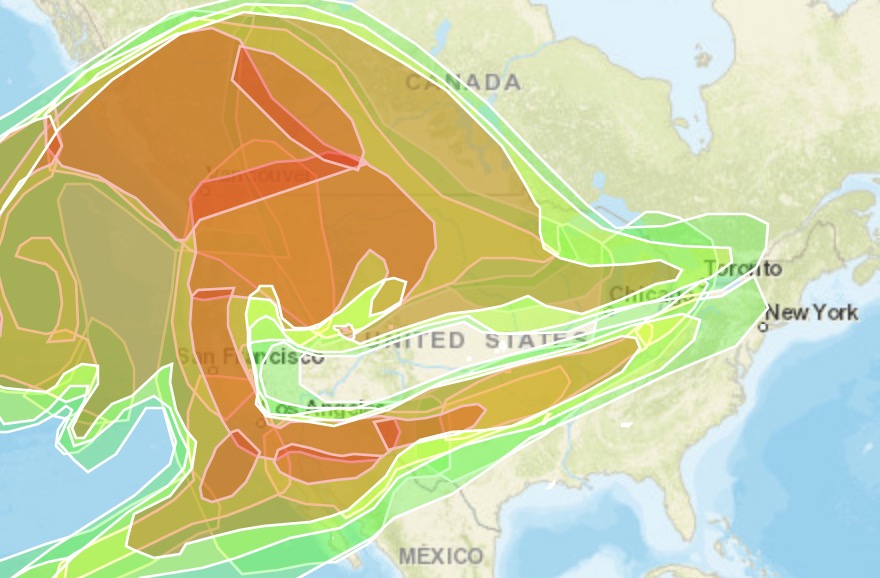
The next two maps from AirNow have the same smoke data, but there is a choice of two background maps, terrain or aerial.
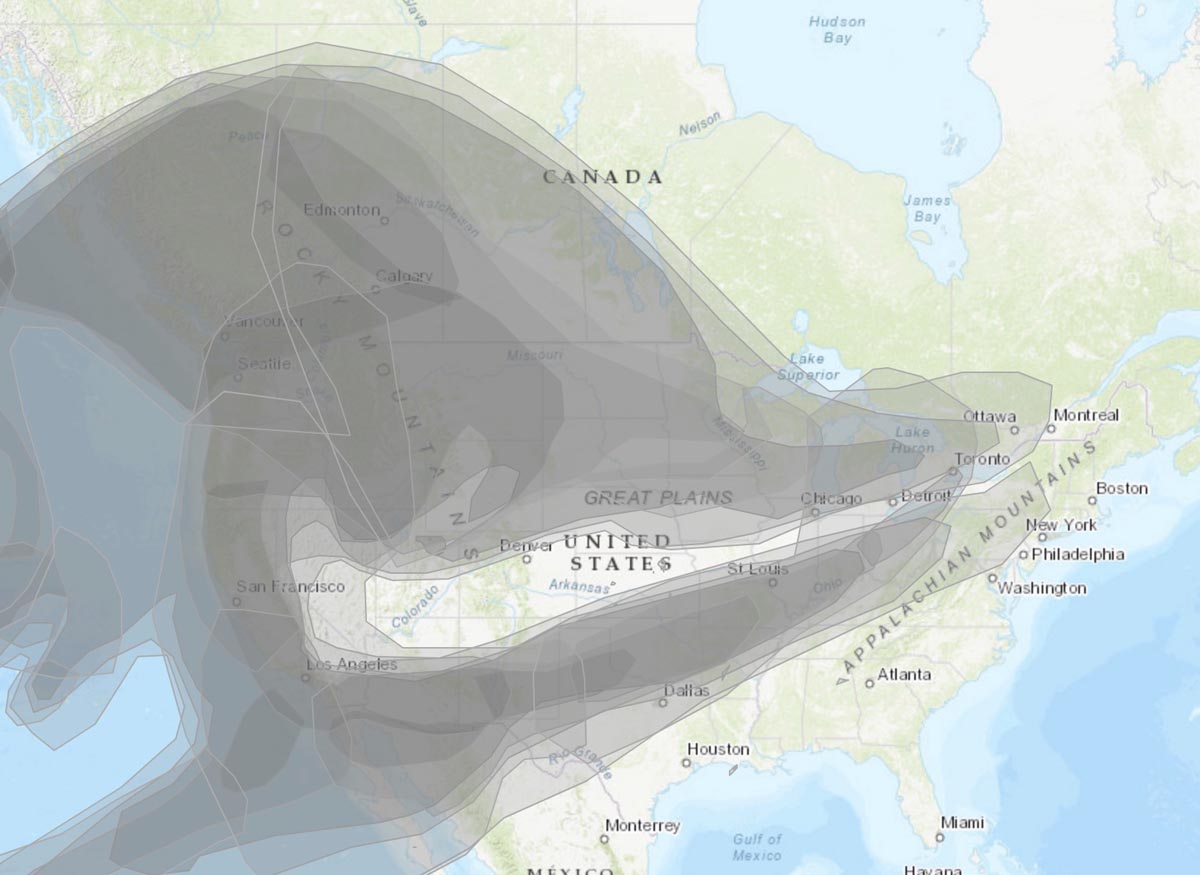
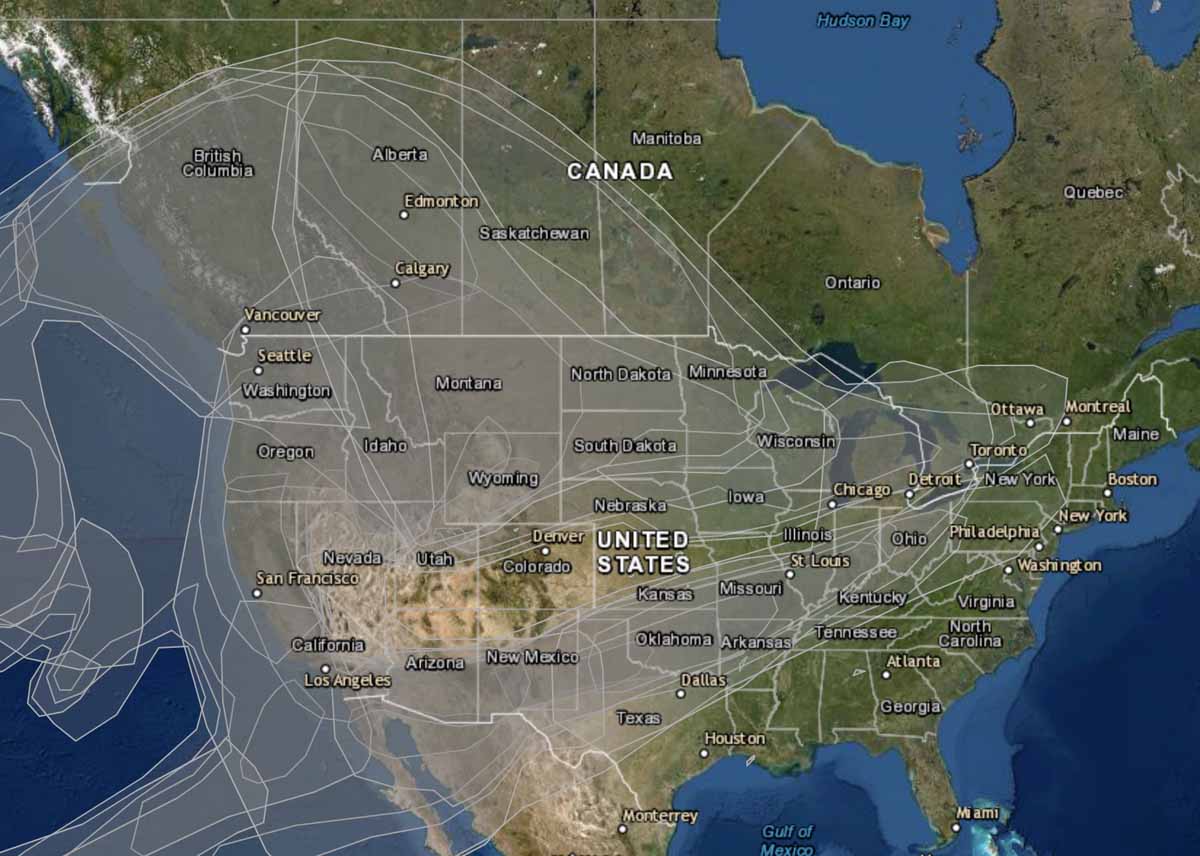
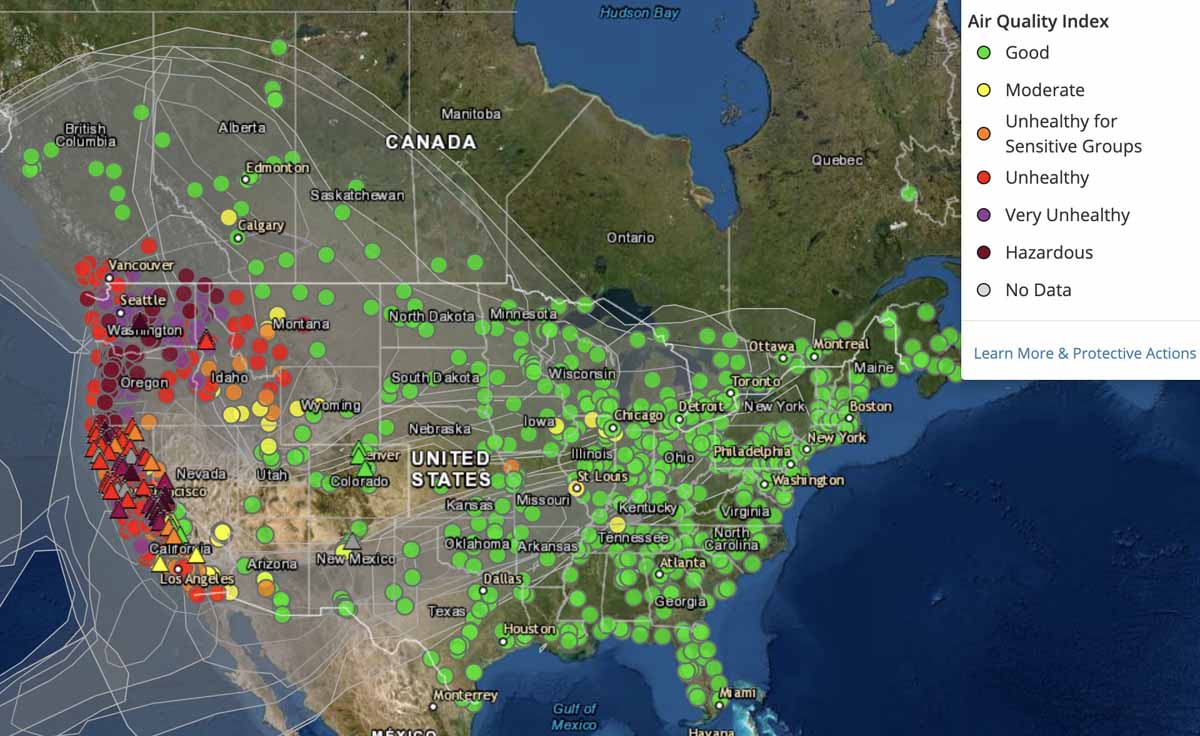
September 14, 2020 | 7:40 a.m. MDT
Wildfires in the West are producing large quantities of smoke that is severely affecting residents in those areas, but it is also spreading to other states.
Simply staying inside is not enough to protect yourself unless you are aggressively filtering the air with HEPA filters. Outdoor air finds ways to come into your home. If there was no air exchange, you would eventually die as the carbon dioxide levels rose and all of the oxygen was used.
The information below is from AirNow.gov.
Air quality between Unhealthy and Hazardous is reported in most of Washington, Oregon, Idaho, and northern California
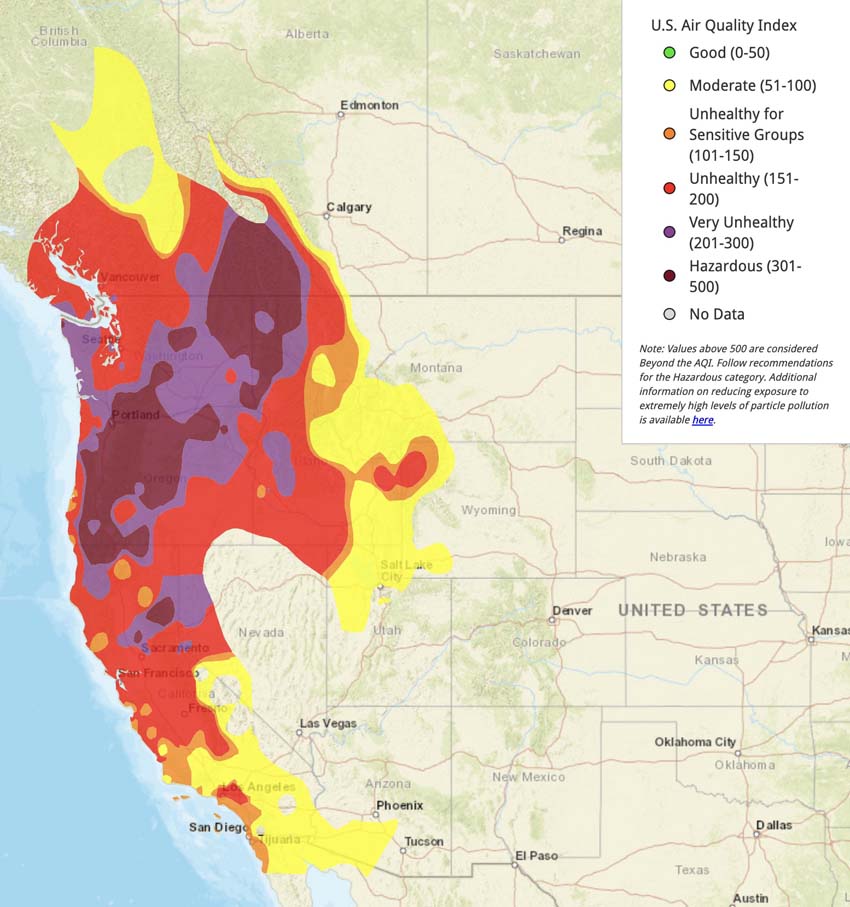
Above is the air quality in the western United States as reported by AirNow at 12:54 p.m. PDT September 13, 2020. Air quality between Unhealthy and Hazardous is reported in most of Washington, Oregon, Idaho, and northern California.
The smoke forecast is below, for 11:59 p.m. PDT Sept 13, 2020. It predicts the smoke will be spreading east, farther into Montana, Nevada, Utah, and Wyoming.
